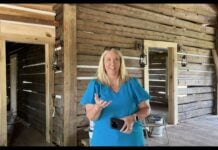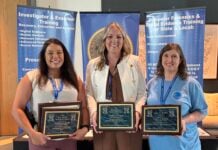Where Rivers Run and Forests Teach: The Biodiversity Legacy of UWA’s Cahaba Center
By Sheila Duncan
Reporter
Just down the road, we have a place of beauty and wonder. The UWA Cahaba Biodiversity Center (CBC) is set to become a leader in biodiversity research in Alabama, the Southeast, and beyond. Alabama ranks 4th in biodiversity among all U.S. states and is number one east of the Mississippi River. It also ranks first in the number of species of five aquatic animals: freshwater fish, mussels, snails, turtles, and crayfish. A look at Alabama’s geologic map shows that the state has one of the most diverse geologies in the country. This variety of rocks and soils creates many different habitats, which support a large number of species.
Joan L. Rundles, Assistant Director of the UWA Cahaba Biodiversity Center says, “We aim to educate people “from K to gray” about biodiversity, conservation, restoration, and land use management.”. To do this, they use several methods. Visitors are taken around the property in Kubota side-by-side vehicles to explore different trails, habitats, and geologic features. Each stop is a learning opportunity. At the cave, for example, they talk about how caves form and the plants and animals that live there—then visitors put on helmets and headlamps to explore inside.
Other stops include a pavilion where microscopes are set up to look at plants and small animals found nearby. At the Cahaba River, visitors use nets to catch fish, crayfish, and other small river creatures. Tools like photariums and bathyscopes help them see what they’ve caught, even in shallow water. The property also features limestone glades, sinkholes, streams, hardwood forests, pine plantations in different growth stages, and a natural spring.
The CBC acts as a biological field station. Graduate students from UWA and other universities have already done research here—and many are still continuing their work. Professors and researchers from different schools have also visited and used the site.
Each year for the past three years, more than 600 people have visited the property. Visitors include civic groups, middle and high school students, 4-H clubs, teachers attending workshops, foundation board members, and many others.
















